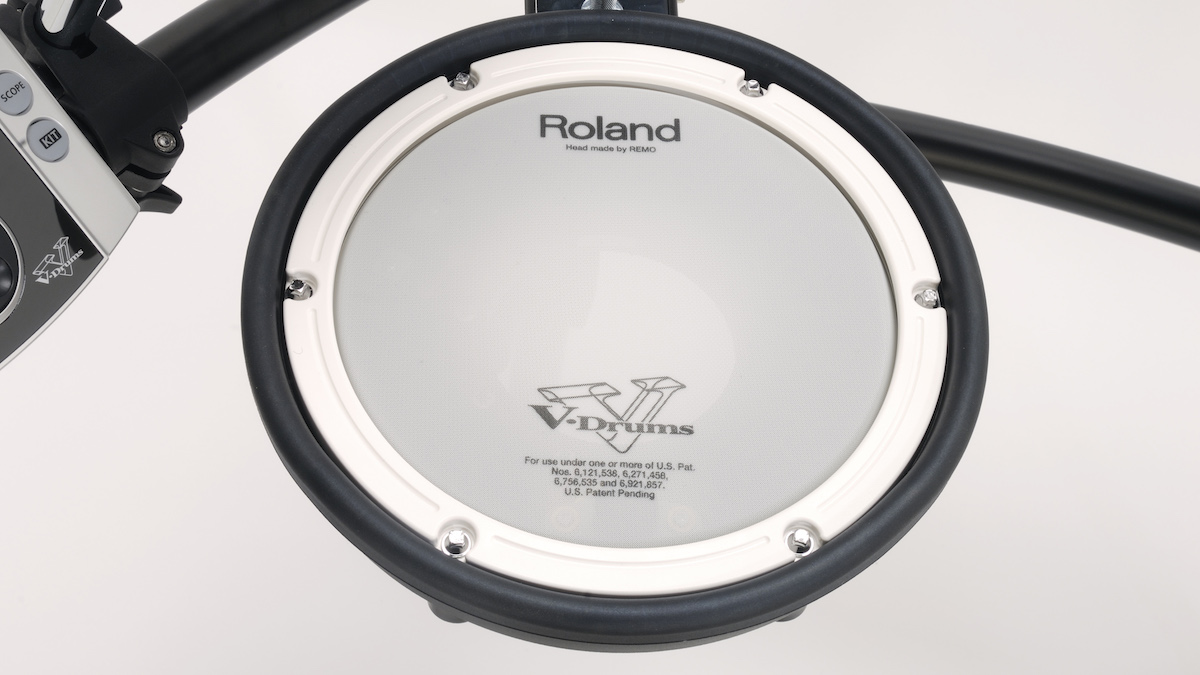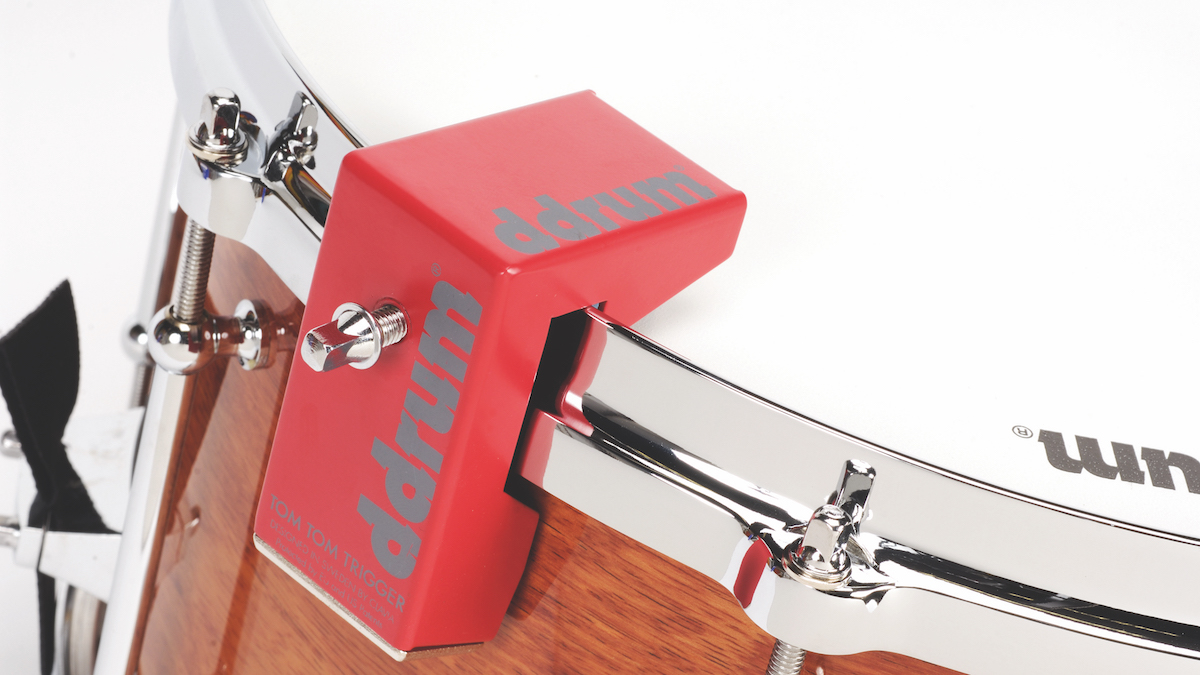10 ways to upgrade your electronic drum set
Simple and affordable upgrades to help you get more from your e-kit or hybrid setup

Electronic drum sets solve a lot of problems, most crucially, overcoming noise concerns when playing at home. If you’ve owned your kit for a while, you might be finding that you’ve reached the limits of exploration, but that doesn’t mean that you need to upgrade your whole kit.
With some simple add-ons and repurposing of some of your existing module’s features, it’s possible to transform a regular five-piece electronic kit into a larger setup, place more sounds at your fingertips and get more from your setup. In this guide we’re going to look at some easy and (mostly) affordable electronic drum set upgrades.
1. Add a mesh head snare
Given that the snare drum is the most dynamic, versatile and played voices in your kit, it makes sense to turn your attention there first. A simple and affordable upgrade is to replace your rubber snare pad with a mesh head-equipped version. Not only will the acoustic noise from you hitting the pad be reduced, but you can tension the head, enabling you to play more expressive techniques such as buzz rolls and ghost notes with greater realism. For many brands - Roland, Alesis, 2Box, ATV - you can go with direct brand replacements for your module. Yamaha kits feature rubber pads of Yamaha’s own Textured Cellular Silicon (TCS) pads rather than mesh, however it’s possible to add mesh pads from the brands above, or third-party pads.

2. Acoustic conversion
One of the most common ‘complaints’ about electronic drums is that the pad diameters and depths don’t always translate from our acoustic drum sets. A six-inch playing surface is unlikely to ever give the same sense of realism as playing a larger pad, positioned similarly to an acoustic kit. However, there’s nothing to stop you from converting a single drum - or even an entire set of shells - to an electronic kit. Roland’s KD-A22 kick drum conversion kit gives you everything you need to convert an acoustic bass drum into an electronic kick, while brands including Jobeky and Pintech offer internal trigger and head solutions for converting your entire kit.
3. Easy triggering
If you don’t fancy making more complex alterations to acoustic drums, you could try using an externally-mounted acoustic drum trigger such as Roland’s RT-30 series, Yamaha DT50 or DDrum Acoustic Pro. “What about the noise, though!”. That’s where mesh heads come in. Fit your acoustic shell with a Remo Silentstroke, Roland PowerPly, Evans SoundOff or any other mesh head of your choosing, and you’ll turn your drum shell into a single or dual-zone silent trigger pad for your kit. If you change your mind, you can always revert the drum back to its original acoustic state with a simple head change.

4. Make use of stereo inputs
Plenty of kits offer connections for dual-zone pads, and unless you’re using those tom rim sounds, you can make better use of them by splitting the input on your module and connecting additional single-zone pads for more toms, or auxiliary sounds that only require one playing surface. You’ll need a splitter cable with a stereo jack connection, which splits into two mono jacks, and you might also have to do a quick bit of tweaking in your module in order (check your manual and settings) to tell it that you want it to receive two mono pads rather than a single stereo one.
5. Add triggers over MIDI
That electric kit seemed like such a brilliant convenience, until you joined a Dream Theater covers band. But, just because you’ve run out of trigger inputs on your module, doesn’t mean you can’t build a Megatron of an electronic setup. If you’ve ever stared at the MIDI input socket on the back of your module and wondered what its purpose is for, this is one particularly useful one. Using an additional trigger-to-MIDI interface such as the dDrum DDTI, a sample pad such as an Alesis Strike Multipad or Roland SDP-SX or even an affordable second e-kit module will give you everything you need to connect additional pads into your kit. The MIDI out from the second module is then connected to your main brain’s MIDI input, allowing you to play a whole extra set of sounds from your secondary pad setup.
Want all the hottest music and gear news, reviews, deals, features and more, direct to your inbox? Sign up here.
6. Integrate smaller pads
Once you’ve split or expanded your trigger inputs, you’ll need something to connect to them! Smaller pads such as Roland’s CY-5 cymbals, and single-zone BT-1 Bar Trigger make excellent peripheral triggers for expanding your kit with digital splashes, cowbells and more, and thanks to their smaller sizes, you can place them amongst your main ‘shells’ easily.

7. Use plugins
Bored of your on-board sounds, and no facility to import your own samples into your module? Why not turn your kit into a realistic MIDI controller for software such as Toontrack Superior or EZ Drummer, Steven Slate Drums, GetGood Drums, BFD or one of the many other sampled drum kit instruments available. You’ll need a computer to host the software, but the enhanced sampling resolution of these types of packages offer a staggering amount of realism. It’s one of the easiest ways to produce pro-quality drum recordings, and because the sounds are all captured in world-class studios, often by the producers featured in your record collection, you can rest easy knowing that you’re getting some of the best drum sounds available.
8. Integrate samples
As you probably already know, your drum module contains audio samples of drums which are played back when you hit the pads. What you may not know is that your module could be capable of importing samples into its internal memory over USB or via a memory stick. Not every kit can do this, but recent releases from Roland (TD-17), Alesis (Crimson), and Yamaha (DTX6) all feature sample-import capabilities. This means that not only can you create your own custom sounds and play them straight from your module, but you can purchase pre-made samples that are ready to go. Check out sites such as Splice and Iwantthatsound for drum-friendly one-shots. Or, if you’re just looking to give it a try, have a look at our SampleRadar section for thousands of free sounds.
9. Upgrade your hi-hats
Can a single pad controlled by a remote foot pedal ever feel like you’re playing a real hi-hat? We’d argue ‘not exactly’. Check out the hi-hat options for your kit and see if it’s possible to add a traditional stand-mounted pads option. The mechanical movement of the pedal and clutch assembly can really add to the experience, plus you’ll be rewarded with a spare cymbal pad which you can recirculate into your setup, or sell to fund your new purchase!

10. Game of Thrones
The most obvious difference between playing acoustic and electronic drums is the volume level, and it’s probably a big factor in your decision to use an electronic kit in the first place. While this is a necessity for most of us, the lack of ‘feedback’ we receive when striking an electronic pad is one of the reasons electronic drums don’t feel as realistic. The air movement and vibrations that come from our acoustic kits simply aren’t there. But, what if you could get tactile response from an electronic kit without adding to the overall noise level?
Well, you can, and you’re sitting on the solution. Porter and Davies’ BC range of drum stools use a built-in transducer and external amplifier to pump the lower frequencies of the sound you plug into it through your throne and directly into your body. Crucially, it’s only you who will notice it, as it isn’t working like a traditional driver speaker from your PA speakers. The result? You’ll feel the vibrations from the body of the sound, giving you that ‘kit-mic’d-on-stage’ feeling, without anyone else being any the wiser. They don’t come cheap, but once you’ve felt it through your trap, you’ll never go back. Specifically, the Porter & Davies BC-X comes out top in our guide to the best drum thrones.
- The best beginner electronic drum sets for newbies
- Expand your horizons with the best electronic drum pads

Stuart has been working for guitar publications since 2008, beginning his career as Reviews Editor for Total Guitar before becoming Editor for six years. During this time, he and the team brought the magazine into the modern age with digital editions, a Youtube channel and the Apple chart-bothering Total Guitar Podcast. Stuart has also served as a freelance writer for Guitar World, Guitarist and MusicRadar reviewing hundreds of products spanning everything from acoustic guitars to valve amps, modelers and plugins. When not spouting his opinions on the best new gear, Stuart has been reminded on many occasions that the 'never meet your heroes' rule is entirely wrong, clocking-up interviews with the likes of Eddie Van Halen, Foo Fighters, Green Day and many, many more.